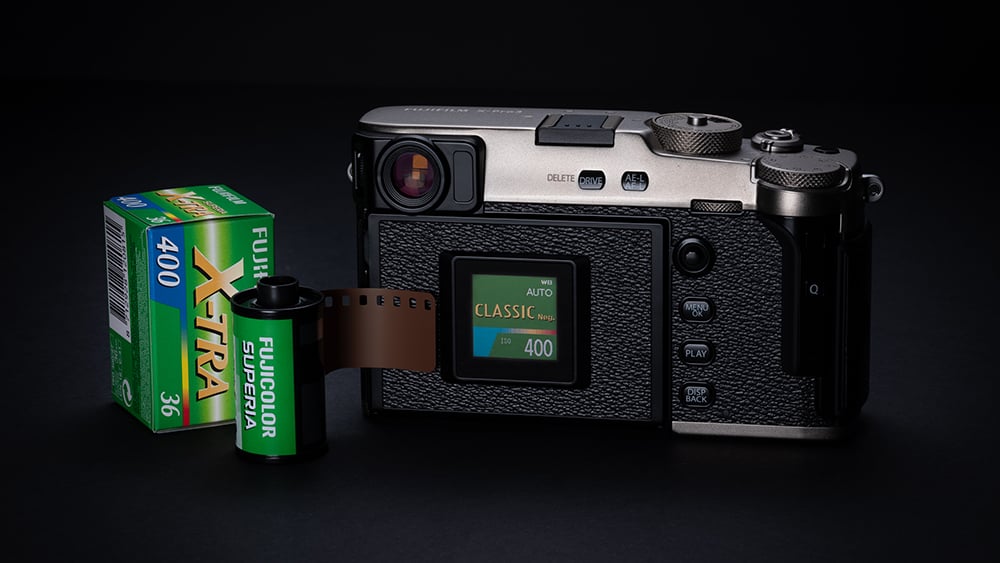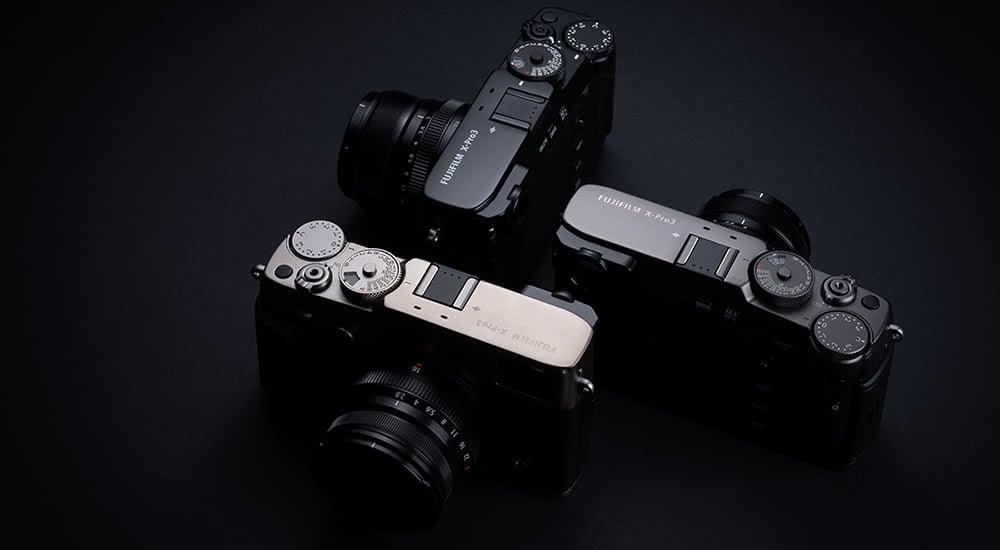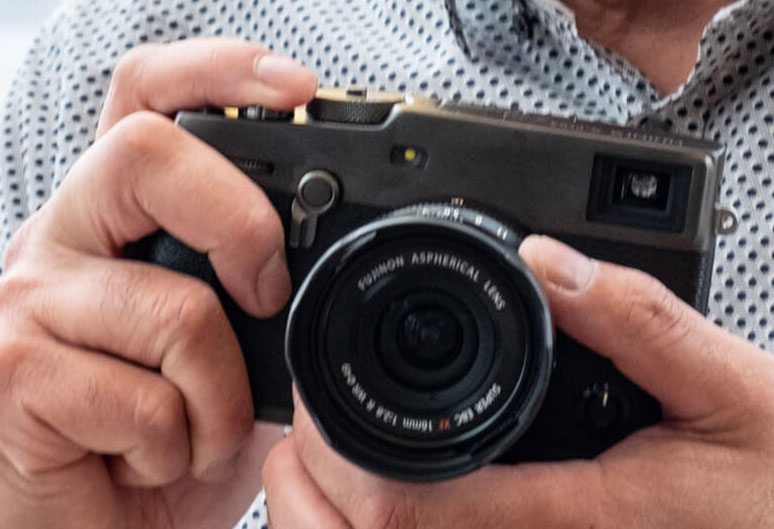Fujifilm has pumped its latest technology into its new X-Pro3 rangefinder digital body. This latest release features higher resolution, improved AF and is the most durable Fujifilm body yet. With an unusual rear LCD design Fujifilm prove that, as ever, they are brave enough to be different with a design that pays homage to the company’s analogue photography heritage.
The camera has launched in 3 colour variations Black , Dura Black and Dura Silver – more on the coatings below.

The Fujifilm X-Pro3 is the third generation of the X-Pro rangefinder-style digital mirrorless camera from Fujifilm. In 2012 the original Fujifilm X-Pro1 launched the X-Series interchangeable lens system. Since then the compact and portable system has been adopted by many documentary and street photographers. The new X-Pro3 has improved on its predecessor the X-Pro2 with: the latest generation sensor and processor, vastly improved AF sensitivity, a new film simulation mode, and an improved viewfinder. We dive into the details below.
4th Generation Sensor & Image Processor
The X-Trans CMOS 4 sensor is combined with the X-Processor 4 image processing engine for flagship image quality and recording performance. This technology was first seen in the Fujifilm X-T3 body and later the X-T30. The X-Pro3 has 26.1 megapixels with phase detection AF pixels built into the sensor. The processor can combine in-camera continuously shot images for HDR rendering and up to 9 frames for multiple exposures in different combination modes. The processor can handle high data-rates for 4k video recording for up to 15 minutes.
Enhanced Build and Durability
The X-Pro3 is built to withstand professional use with improved coatings, build materials and weather sealing
- External body covers of the X-Pro3 are made from Titanium which is strong, corrosion resistant and light.
- The X-Pro3 internal chassis is magnesium alloy for even more weight saving.
- Surface-hardening technology Duratect protects the X-Pro3 from scratches and gives a nice metallic finish applied to Dura Black and Dura Silver versions.
- Weather sealing applied at 70 points for enhanced moisture and dust resistance.
Improved Auto-Focus
Fujifilm have improved their AF algorithm which will enable auto-focus in lighting conditions of -6EV which is the light cast by a quarter-moon! The new firmware released with the X-Pro3 features an AF range limiter function to increase speed of AF lock-on with any lens. You can use these settings to dial in a focus preset point with any X-series lens.
The Viewfinder
The rangefinder style viewfinder gives you the option of an optical viewfinder or an electronic viewfinder. This lets you choose between a constant view of your subject or a display that represents your exposure and can play back your last shot all within a clear bright viewfinder so that you can keep your eye to the camera.
- Optical viewfinder responds at the speed of light
- OVF can be augmented with a smaller EVF window to display exposure simulation, enlarged focus area or pictures taken
- EVF covers 97% of sRGB colour space for accurate colour reproduction
- EVF boost mode increases apparent viewfinder smoothness to approx. 200fps
- EVF delivered by a 3.69 million dot organic EL panel that delivers high contrast and fine detail.
Retro rear LCD panel
The rear LCD monitor on the X-Pro3 hinges down from the back of the camera 180 degrees. When flipped up, see the image below, the screen is closed into the camera. The LCD screen is designed for use when waist-level shooting, shooting overhead, and for accessing the menu and adjusting camera settings.
When the LCD closes, on the rear of the camera there is a small square memory LCD screen that is always on and displays shooting settings such as frames remaining and, ISO and shutter speed. Or it can display the film simulation selected with ISO and white balance. This represents the film windows used to store box-ends on classic analogue cameras to remind photographers what film they had loaded.

The Fujifilm X-Pro range and all other X series cameras are based exclusively around the APS-C sensor size. This commitment to a single sensor dimension means that unlike Canon, Nikon and Sony systems the Fujifilm X-Series lenses are much smaller and lighter as they have never been required to project an image circle that covers a full frame sensor.
Fujifilm state that the X-Pro3 in Black will become from the 28th November and the Dura Black and Dura Silver versions will be available from mid-December.


